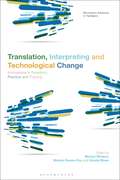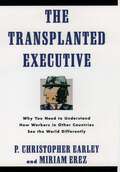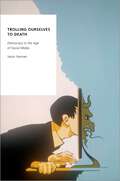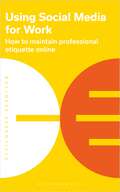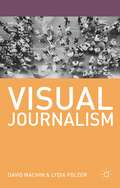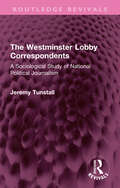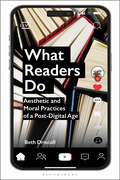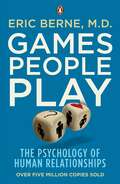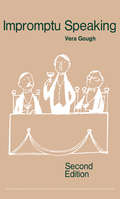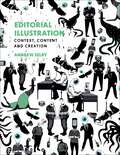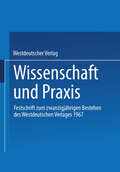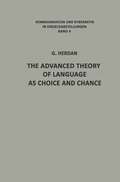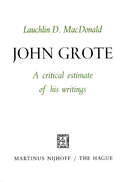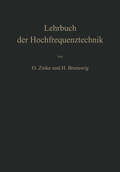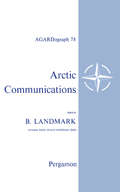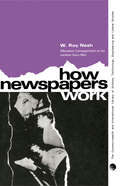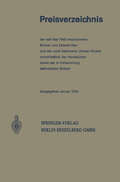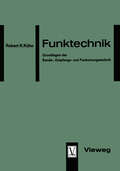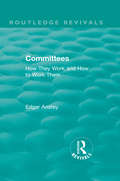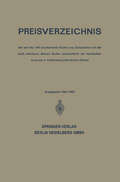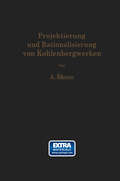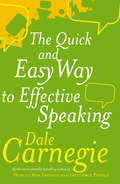- Table View
- List View
Translation, Interpreting and Technological Change: Innovations in Research, Practice and Training (Bloomsbury Advances in Translation)
The digital era is characterised by technological advances that increase the speed and breadth of knowledge turnover within the economy and society. This book examines the impact of these technological advances on translation and interpreting and how new technologies are changing the very nature of language and communication. Reflecting on the innovations in research, practice and training that are associated with this turbulent landscape, chapters consider what these shifts mean for translators and interpreters. Technological changes interact in increasingly complex and pivotal ways with demographic shifts, caused by war, economic globalisation, changing social structures and patterns of mobility, environmental crises, and other factors. As such, researchers face new and often cross-disciplinary fields of inquiry, practitioners face the need to acquire and adopt novel skills and approaches, and trainers face the need to train students for working in a rapidly changing landscape of communication technology. This book brings together advances and challenges from the different but intertwined perspectives of translation and interpreting to examine how the field is changing in this rapidly evolving environment.
The Transplanted Executive: Why You Need To Understand How Workers In Other Countries See The World Differently
by P. Christopher Earley Miriam ErezTrolling Ourselves to Death: Democracy in the Age of Social Media (Oxford Studies in Digital Politics)
by Jason HannanAlmost forty years ago, Neil Postman argued that television had brought about a fundamental transformation to democracy. By turning entertainment into our supreme ideology, television had recreated public discourse in its image and converted democracy into show business. In Trolling Ourselves to Death, Jason Hannan builds on Postman's classic thesis, arguing that we are now not so much amusing, as trolling ourselves to death. Yet, how do we explain this profound change? What are the primary drivers behind the deterioration of civic culture and the toxification of public discourse? Trolling Ourselves to Death moves beyond the familiar picture of trolling by recasting it in a broader historical light. Contrary to the popular view of the troll as an exclusively anonymous online prankster who hides behind a clever avatar and screen name, Hannan asserts that trolls have emerged from the cave, so to speak, and now walk in the clear light of day. Trolls now include politicians, performers, patriots, and protesters. What was once a mysterious phenomenon limited to the darker corners of the Internet has since gone mainstream, eroding our public culture and changing the rules of democratic politics. Hannan shows how trolling is the logical outcome of a culture of possessive individualism, widespread alienation, mass distrust, and rampant paranoia. Synthesizing media ecology with historical materialism, he explores the disturbing rise of political unreason in the form of mass trolling and sheds light on the proliferation of disinformation, conspiracy theory, "cancel culture," and digital violence. Taking inspiration from Robert Brandom's innovative reading of Georg Wilhelm Friedrich Hegel, Trolling Ourselves to Death makes a case for building "a spirit of trust" to curb the epidemic of mass distrust that feeds the plague of political trolling.
Using Social Media for work: How to maintain professional etiquette online (Business Essentials)
by Bloomsbury PublishingEssential reading for anyone who has to work with social media in a professional capacity, from using networking sites to marketing their businesses or employers.Many people use social media every day - and it can be a vital tool in professional life. Whether you're polishing an online CV, contributing to a chat group relating to your industry sector, or using Instagram to highlight goods and services, the professional face you present needs to be strategically different to the 'social' posts that you may make outside of work. Using Social Media at Work is an easy to read, pocket-sized guide that can be dipped into for advice, tips and guidance - perfect for reading in a lunch break or on a commute. It is the ultimate etiquette guide for anyone nervous about using social media in professional settings, including: top tips, common mistakes and advice on how to avoid them, summaries of key points, and lists of the best sources of further help.
Visual Journalism (Journalism)
by David Machin Lydia PolzerThe digital age has revolutionised the look of journalism, be it online or in print. The subsequent shift to multi-media and multi-platform publishing arguably makes visual appearance and branding more important than ever. Yet visual journalism remains a relatively under-theorised and under-researched field. Visual Journalism presents a unique, critical investigation into this area. Combining theory and practice, the chapters integrate the experiences of practitioners working in photography, visual design and set design, including insights into how they work and the changing environments they find themselves in, with an innovative theory of visual communication – multimodality – that enables the text to break down and analyse the key elements and patterns of visual design.In exploring visual journalism from these two angles, and across a range of contemporary media platforms, the text evaluates the extent to which visual communication comprises a significant part of what content means to audiences. As such, the book is an invaluable resource for students of journalism, media studies and photography, as well as for practising designers and journalists.
The Westminster Lobby Correspondents: A Sociological Study of National Political Journalism (Routledge Revivals)
by Jeremy TunstallThe Westminster Lobby correspondents have a special place in both the politics and the mass media of Britain. These journalists dominate the behind-the-scenes reporting of British national politics. In this book, originally published in 1970, Jeremy Tunstall presents the first systematic social science study of the uniquely British phenomenon of Lobby correspondents.The study includes data collected from interviews with the national Lobby correspondents, who also completed lengthy questionnaires. It contains evidence of their careers, political opinions, pay, working conditions, relationships with their employing news organization and political news sources, and on the way in which the correspondents both compete with, and exchange information with, each other. As well as this fascinating empirical data, the book offers an important contribution to the sociology of politics and the mass media, and to the study of ‘organizational intelligence’ and the sociology of occupations.There had long centred upon the Lobby correspondents many myths and misconceptions, which Jeremy Tunstall effectively demolishes. (The so-called ‘Lobby rules’ were here published for the first time.) Other real dilemmas are, however, revealed: the competing demands of publicity and secrecy; the dilemmas of British politics in which basic principles – such as Parliamentary supremacy and Cabinet secrecy – are daily breached, not only by the correspondents, but also by leading politicians; and the problems of a system of political communication whose obsession with daily news values is so similar to official and academic contributions. With media and politics still very much linked today, this reissue can be read and enjoyed in its historical context.
The Westminster Lobby Correspondents: A Sociological Study of National Political Journalism (Routledge Revivals)
by Jeremy TunstallThe Westminster Lobby correspondents have a special place in both the politics and the mass media of Britain. These journalists dominate the behind-the-scenes reporting of British national politics. In this book, originally published in 1970, Jeremy Tunstall presents the first systematic social science study of the uniquely British phenomenon of Lobby correspondents.The study includes data collected from interviews with the national Lobby correspondents, who also completed lengthy questionnaires. It contains evidence of their careers, political opinions, pay, working conditions, relationships with their employing news organization and political news sources, and on the way in which the correspondents both compete with, and exchange information with, each other. As well as this fascinating empirical data, the book offers an important contribution to the sociology of politics and the mass media, and to the study of ‘organizational intelligence’ and the sociology of occupations.There had long centred upon the Lobby correspondents many myths and misconceptions, which Jeremy Tunstall effectively demolishes. (The so-called ‘Lobby rules’ were here published for the first time.) Other real dilemmas are, however, revealed: the competing demands of publicity and secrecy; the dilemmas of British politics in which basic principles – such as Parliamentary supremacy and Cabinet secrecy – are daily breached, not only by the correspondents, but also by leading politicians; and the problems of a system of political communication whose obsession with daily news values is so similar to official and academic contributions. With media and politics still very much linked today, this reissue can be read and enjoyed in its historical context.
What Readers Do: Aesthetic and Moral Practices of a Post-Digital Age
by Dr Beth DriscollShining a spotlight on everyday readers of the 21st century, Beth Driscoll explores how contemporary readers of Anglophone fiction interact with the book industry, digital environments, and each other.We live in an era when book clubs, bibliomemoirs, Bookstagram and BookTok are as valuable to some readers as solitary reading moments. The product of nearly two decades of qualitative research into readers and reading culture, What Readers Do examines reading through three dimensions - aesthetic conduct, moral conduct, and self-care – to show how readers intertwine private and social behaviors, and both reinforce and oppose the structures of capitalism. Analyzing reading as a post-digital practice that is a synthesis of both print and digital modes and on- and offline behaviors, Driscoll presents a methodology for studying readers that connects book history, literary studies, sociology, and actor-network theory. Arguing for the vitality, agency, and creativity of readers, this book sheds light on how we read now - and on how much more readers do than just read.
Games People Play: The Psychology of Human Relationships
by Eric BerneDo you realise you, and all the people you know, play games? All the time? Sexual games, marital games, complex games that you’re not even aware of as you go about your usual life? You might play games like ‘Alcoholic’ or ‘The Frigid Woman' at weekends, or perhaps 'Ain't it awful' or ‘Kick me’ while you’re at work.First published in the 1960s and recognized as a classic work of its kind by professionals, the bestselling ‘Games People Play’ is also an accessible and fascinating read. It is a wise, original, witty and very sensible analysis of the games we play in order to live with one another – and with ourselves.
Impromptu Speaking
by Vera GoughImpromptu Speaking, Second Edition provides a time-saving method and a guide for the type of speech anyone might make. The book, in particular, covers how to make short speeches in a conversational way. Organized into four chapters, the book begins with an explanation of confidence in speechmaking. The role that sense of humor plays in a speech is also addressed. Subsequent chapter elucidates the five-point plan, which corresponds to the fingers and thumb of one hand. In studying the plan, no. 1 (little finger) always refers to the occasion, and no. 5 (thumb) always refers to the purpose of it. Then, with practice, notes are written against 2, 3, and 4 only. In the last chapter, plans and examples are given. This book will be helpful to anyone who will make an impromptu speech.
Editorial Illustration: Context, content and creation
by Andrew SelbyAcross digital and print media, editorial illustrators create visuals to support text and convey ideas, but there is more to these illustrations than meets the eye.Internationally-recognised illustrator and educator Andy Selby takes you through the importance of context and content when responding to editorial illustration briefs, explaining how understanding of visual communication concepts leads to more successful illustrations - all while under the time pressure of editorial briefs. Covering ideation, development and execution, this book includes:- A short history of illustration as a political and social tool- How to use visual language, symbolism and satire and to what purpose- Representation of identity, ethics and society - both for impact and sensitive designs- Research, commercial judgement and experimentation- Professional conduct, self-promotion, responsibilities and plagiarism So whether you're illustrating a news story, summarising new scientific discoveries or creating an image for a magazine cover, Editorial Illustration will give you the skills to produce striking commercial designs on time and to brief.
Geochemistry of Epigenesis (Monographs in Geoscience)
by A. I. Perel manIn its classical sense "epigenesis" refers to all geological processes originating at or near the surface of the earth. It thus embraces all those phenomena which we associate with the land scape; Perel'man has already written extensively on this subject. The landscape, in the physical sense, is controlled by the interac tion of exogenic and endogenic agencies-on the one hand, the atmo sphere, the wind, the rain, and other components of the weather, the forces of running water and the planetary controls of gravitational and tidal nature; and on the other hand the materials of the earth's crust, from sediments to metamorphic rocks and igneous materials from deep endogenic sources. In practical terms the epigene region involves the products of weathering, the soils, the transported material, the colluvium of hillsides, and the alluvium of stream valleys. It involves those landforms that are products of the erosional sculpturing of the landscape, as well as those that result from accumulation, such as glacial moraines and desert sand dunes. The science of geomor phology is gradually beginning to evolve from a passive cataloging of scenery and its deduced causes (in the Davisian sense) into a vigorous study of dynamic processes. These are partly geophysical, in the sense of hydraulics and mechanical studies, and partly geo chemical.
Wissenschaft und Praxis: Festschrift zum zwanzigjährigen Bestehen des Westdeutschen Verlages 1967
by Westdeutscher VerlagThe Advanced Theory of Language as Choice and Chance (Communication and Cybernetics #4)
by Gustav HerdanIn trying to give an account of the statistical properties of language, one is faced with the problem of having to find the common thread which would show the many and multifarious forms of language statistic- embodied in scattered papers written by linguists, philosophers, mathe maticians, engineers, each using his own professional idiom - as belong ing to one great whole: quantitative linguistics. This means that the investigator has to find the system of this branch of science which would enable him to arrange the vast material in an orderly fashion, and present it as an organic whole. Such a system is conceived in this book, as comprising the following disciplines as the four main branches of literary statistics: Statistical Linguistics, Stylostatistics, Optimal Systems of Language Structure, and Linguistic Duality (Parts I-IV). The Introduction is meant to define the position of the book with regard to both, linguistics and statistics.
John Grote: A Critical Estimate of his Writings
by Lauchlin D. MacDonaldAn objective of this book is to discuss some of the contributions made by John Grote to philosophy. This work is an extension of a dissertation written for the doctorate at Boston University. The author wishes to acknowledge the invaluable assistance in many places to Professor Peter A. Bertocci and the late Professor Edgar S. Brightman both of whom read the entire manuscript in its original form. Also, the author acknowledges the encouraging interest and support of his wife, Helen, whose many suggestions have improved the writing and without whose assistance this work would not have been accomplished. The author assumes complete responsibility for whatever errors or deficiencies appear in the book. All known writings of Grote are listed and the more important ones analyzed. LAUCHLIN D. MACDONALD CHAPTER I INTRODUCTION 1. JOHN GROTE'S LIFE i. Sketch of his life John Grote will remain best known by reason of the thought formu lated in the Exploratio Philosophica, or Rough Notes on Modern I ntellectu al Science. To the philosophical world of his own time he was well known as the teacher who ably held the chair of Moral Philosophy in the University of Cambridge from r855 until the year of his death, r866, to the Knightbridge Professor, William Whewell whose in succession Philosophy of Science is the subject of at least one chapter of the Exploratio Philosophica. Grote's birthplace was Beckenham in Kent, and the date, May 5, r8r3.
Arctic Communications: Proceedings of the Eighth Meeting of the AGARD Ionospheric Research Committee, Athens, Greece, July 1963
by B. LandmarkArctic Communications is a compilation of the proceedings of the Eighth Meeting of the Ionospheric Research Committee of NATO's Advisory Group for Aeronautical Research and Development, held in Athens, Greece in July 1963. The meeting provided a forum for discussing advances in communications equipment used to conduct research in the Arctic and covered a wide range of topics such as the physical properties of the Arctic ionosphere; Arctic high-frequency communications; soundings and field strength measurements; and observations in the Arctic during nuclear tests. This book is comprised of 25 chapters and begins with a discussion on experimental studies of high latitude absorption phenomena, including auroral absorption, polar cap absorption, and sudden commencement absorption. Direct measurements of D-region electron densities during the absorption periods are also presented. Subsequent chapters focus on the ionospheric absorption of cosmic noise observed at geomagnetically conjugate points; ionospheric ionization produced by solar flares; military communication facilities in the Canadian Arctic; and radio noise problems in Arctic regions. Phase instabilities on a very-low-frequency transmission path passing through the auroral zone are also considered. This monograph will be of particular value to scientists and researchers with interest in the Arctic.
How Newspapers Work: The Commonwealth and International Library: Liberal Studies Division
by W. Roy NashHow Newspapers Work is a detailed account of how newspapers work, with emphasis on the mechanics of news gathering and tasks of the reporter, sub-editor, news specialists, and editor. A typical day in the life of a morning newspaper is described, and the role of the press in society is examined. This book is comprised of seven chapters and begins with an introduction to the history of newspapers, with particular reference to some ""popular"" national daily newspapers in Britain such as the Daily Express, Daily Mail, Daily Herald, Daily Mirror, and Daily Sketch. The next chapter focuses on the role of reporters in gathering news, their education and training, and qualities of a good reporter. Subsequent chapters look at the main tasks of sub-editors, news specialists such as columnists, and editors. The penultimate chapter describes a typical day in the life of a morning newspaper, while the last chapter considers the social and political aspects of the press. This monograph will be of interest to journalists and those considering a career in the newspaper industry.
Preisverzeichnis: der seit Mai 1945 erschienenen Bücher und Zeitschriften und der noch lieferbaren älteren Bücher einschließlich der Handbücher sowie der in Vorbereitung befindlichen Bücher
by Berlin SpringerFunktechnik: Grundlagen der Sende-, Empfangs- und Funkortungstechnik
by Robert Richard KühnDas vorliegende Buch wurde für die Ausbildung des Funkpersonals und der Funk techniker in der kommerziellen Technik und in anderen Fachgebieten außerhalb der Unterhaltungstechnik geschrieben. Besonderer Wert wurde auf die Erarbeitung der Grundlagen gelegt, auf die heute weniger denn je verzichtet werden kann. Es wird jedoch vorausgesetzt, daß der Leser mit den einfachen Grundgesetzen der Elektrotechnik bereits vertraut ist. Unter weitgehendem Verzicht auf mathematische Hilfsmittel werden alle z. Z. in der Funktechnik angewendeten Prinzipien erläutert, sofern deren Kennmis für die Praxis nützlich erschien. Unter anderem wird gezeigt, daß sich die Vielfalt der physikalischen Vorgänge auf verhälmismäßig wenig grundsätzliche Erscheinungen zurückführen läßt, die überall in der Elektrotechnik zu finden sind. Neben der Vermittlung der Grundlagen werden viele praktische Hinweise fur das Arbeiten mit Funkanlagen gegeben. Diese Teile des Buches werden auch von dem bereits in der Praxis stehenden Funk personal mit Gewinn gelesen werden, zumal die neuesten Erkenntnisse und Er fahrungen ausgewertet wurden. In einer weiteren Veröffentlichung sollen gerätekundliehe Themen behandelt werden.
Routledge Revivals: How They Work and How to Work Them (Routledge Revivals)
by Edgar AnsteyFirst published in 1963, Edgar Anstey’s work gives a detailed account on the inner workings of the committee. Within a committee, different interests nearly always need to be represented when a decision must be taken, and contributions are required from people of different outlook or expert knowledge. A committee is often the only means of achieving a workable solution to a problem. This book attempts to analyse the functioning of different kinds of committee groups and to bring out the factors which make for efficiency and inefficiency. Types of committee and their purpose are discussed, as well as how to lead a discussion to bring out a genuine group view, the roles of chairman and secretary, how individuals influence committee decisions, good and bad tactics, and how to deal with difficult members.
Routledge Revivals: How They Work and How to Work Them (Routledge Revivals)
by Edgar AnsteyFirst published in 1963, Edgar Anstey’s work gives a detailed account on the inner workings of the committee. Within a committee, different interests nearly always need to be represented when a decision must be taken, and contributions are required from people of different outlook or expert knowledge. A committee is often the only means of achieving a workable solution to a problem. This book attempts to analyse the functioning of different kinds of committee groups and to bring out the factors which make for efficiency and inefficiency. Types of committee and their purpose are discussed, as well as how to lead a discussion to bring out a genuine group view, the roles of chairman and secretary, how individuals influence committee decisions, good and bad tactics, and how to deal with difficult members.
Preisverzeichnis: der seit Mai 1945 erschienenen Bücher und Zeitschriften und der noch lieferbaren älteren Bücher einschließlich der Handbücher sowie der in Vorbereitung befindlichen Bücher
by Springe SpringerProjektierung und Rationalisierung von Kohlenbergwerken
by Alois RimanIn einer Zeit ständig steigenden Energie- und Rohstoffbedarfes hat die Kohle trotz der Erschließung anderer Quellen ihre Bedeutung als Energieträger und Grundstoff für die Industrie behalten. Mehr denn je ist es aber angesichts der Konkurrenz notwendig, die rationellsten Methoden in der Gewinnung der Kohle anzuwenden, bestehende Bergbaue zu rationalisieren und zu mechanisieren und durch Konzentration optimale Bedingungen für höchste Arbeitsproduktivität und niedrigste Kosten zu schaffen. Ob es sich um die Projektierung neuer Gruben oder Horizonte handelt oder viel häufiger um die Rationalisierung bestehender Betriebe: der Erfolg des Unternehmens in allen seinen technischen, wirtschaftlichen und sozialen Auswirkungen während der ganzen Betriebszeit hängt von der Vollkommenheit des zugrunde liegenden Projektes und damit von den Kenntnissen und Fähigkeiten des projektierenden Technikers ab. Er wird neben der gründlichen Erfahrung in allen bergmännischen Arbeiten, besonders der Gewinnung, auch Kenntnisse der Rationalisierungs methoden und darüber hinaus Verständnis für die wirtschaftlichen Zusammenhänge im großen besitzen müssen. Beides, Methoden und wirtschaftliche Zusammenhänge, habe ich in dem vorliegenden Buch darzustellen versucht. Ich stütze mich dabei auf die Ergebnisse einer durch Jahrzehnte fortgeführten wissenschaftlichen Untersuchung der technischen und wirtschaftlichen Grundlagen der Projektierung und Rationalisierung und auf deren Auswertung in der Praxis des Ostrau Karwiner Reviers. Gewiß sind gerade im Bergbau lokale und nationale Gegebenheiten stark differenziert. Ich habe mich bemüht, die allgemein gültigen Richtlinien zu geben, die nach den speziellen Erfordernissen der einzelnen Projekte ohne Schwierigkeiten variiert werden können. Die deutsche Ausgabe dieses Buches erscheint auf Anregung d~mtscher Bergingenieure, besonders des Herrn Bergdirektors Bergrat h. c. Dipl.
The Quick And Easy Way To Effective Speaking
by Dale CarnegieGood public speakers are made, not born - or so thinks Dale Carnegie, the pioneer of personal business skills. Yet business, social and personal satisfaction depend heavily upon a person's ability to communicate clearly. Public speaking is an important skill which anyone can acquire and develop. It is also the very best method of overcoming self-consciousness and building confidence, courage and enthusiasm. This classic, well established title has been called 'the most brilliant book of its kind'. It takes you step by step through:-Acquiring basic public speaking skills-Building confidence -Speaking effectively the quick and easy way -Earning the right to talk -Vitalising your talk -Sharing the talk with the audience as well as organisation and presentation skills
